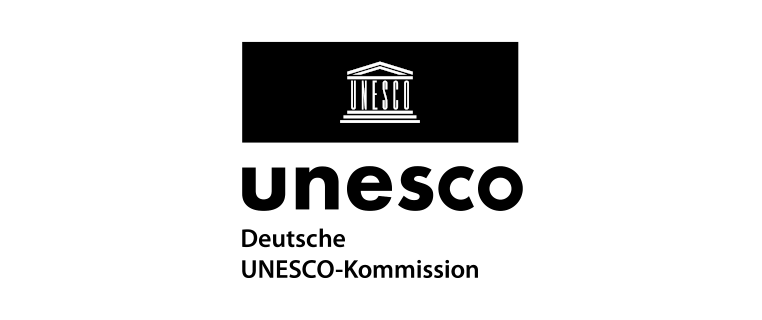General Information
Cooperation projects in 2021Supporting UNESCO biosphere reserves in Southern Africa
What is the MAB Programme?
UNESCO biosphere reserves are the main instrument of the MAB Programme. These protected areas are model regions that promote interdisciplinary approaches to reconcile the conservation of biological diversity with its sustainable use by people.
UNESCO biosphere reservesUNESCO biosphere reserves promote sustainable development by balancing nature conservation and socio-economic development, and by providing local solutions to global challenges.
UNESCO biosphere reserves
Supporting UNESCO biosphere reserves in Southern Africa
- the exchange of knowledge and experiences in the region,
- the establishment of new biosphere reserves,
- the quality assurance and improvement of already designated biosphere reserves.
Exchanging knowledge and experiences: The Regional MAB Workshop
Eswatini
Engaging with Communities in Lubombo BR
Lesotho
Building Management Structures in Mat’seng BR
Zambia
Becoming a UNESCO Biosphere Reserve
Nomination
Zambia: Becoming a UNESCO biosphere reserveHow the nomination process for Kafue Flats was navigated
First impressions of Kafue Flats Biosphere Reserve
Gaining the support of local chiefs
With the support and input of all eight participating chiefs, the MAB Task Team completed the nomination dossier and submitted it to UNESCO. This approach fostered community participation and promotes sustainable development in the area.
Informing local communities via radio shows
Local radio stations are an optimal means to reach individuals within the biosphere reserve areas, as they are a popular news medium in Zambia.
Radio Clip 1: Introducing the Kafue Flats Biosphere ReserveA first impression of the radio programme
Radioclip 2: Sharing the benefits among the communityExperts share insights about innovative practices such as solar energy and fish farming
Endorsement by local chiefs and community feedbackTaking the final steps towards the submission
After the biosphere reserve was designated by UNESCO, the MAB Task Team held a meeting with local chiefs and communities to gain their feedback and acceptance.
Participants expressed their needs for the region's further development, such as capacity-building for alternative livelihoods, biodiversity conservation, and preservation of grazing and water points for livestock.
Lesotho
Building Management Structures in Mat’seng BR
Zambia
Nomination of Kafue Flats BR
Eswatini
Engaging with Communities in Lubombo BR
Building Management Structures
Lesotho: Building management structures in Mat’seng Biosphere Reserve How the MAB Committee engaged with communities and included local stakeholders in the elaboration of management structures
Building management structures in Mat’seng Biosphere Reserve
They are responsible for establishing management structures and implementing various activities to involve local communities. In doing so, they ensure the long-term improvement of the quality of the designation of the area.
First impressions of Mat’seng Biosphere Reserve
Stakeholder project launch meetingBringing the stakeholders together to brainstorm on the way forward
During the meeting, the participants exchanged ideas on possibilities to pool resources in order to enhance the benefits of the biosphere reserve. They also discussed which institutions should be involved in its management.
Training of local MAB Ambassadors Building a team to inform local communities
Creation of various information materialsPromoting Mat’seng Biosphere Reserve
The information material was spread through traditional as well as social media. Other promotional channels such as radio and newspaper adverts and leaflets were also used to inform local communities.
Zambia
Nomination of Kafue Flats BR
Eswatini
Engaging with Communities in Lubombo BR
Lesotho
Building Management Structures in Mat’seng BR
Enganging the community
Eswatini: Engaging with local communitiesConducting a community-needs-assessment in Lubombo Biosphere Reserve
Conducting community-needs-assessmentsHow students identified the needs and demands of the local residents
The Department of Statistics of Eswatini analyzed the data, and traditional authorities then developed community projects tailored to their specific needs and demands.
Community projectsTraining local tour guides for sustainable tourism
Participants were also given the opportunity to pitch their own tour guiding business ideas to a jury. The top three proposals received additional support and resources to establish their tour guiding program. The project served to develop the Lubombo Biosphere Reserve as a hub for sustainable tourism, contributing to the community's economic growth.
Community projectsCommunity market to support families
The project served two purposes: generating income for the community members and supporting destitute families within the community using the rent paid for the stalls. In this way, the project is a model for the promotion of economic empowerment and social support for the community.
Zambia
Nomination of Kafue Flats BR
Eswatini
Engaging with Communities in Lubombo BR
Lesotho
Building Management Structures in Mat’seng BR
Matsooana SekokotoanaA biosphere reserve has been designated… what next?
Vongani MaringaHow have countries addressed this need for further guidance?
Tonderai MakoniThe involvement of youth in biosphere reserves
Further readings

For more information, please consult these websites:





























































 Supporting UNESCO biosphere reserves in Southern Africa
Supporting UNESCO biosphere reserves in Southern Africa
 What is the MAB Programme?
What is the MAB Programme?
 UNESCO biosphere reserves
UNESCO biosphere reserves
 UNESCO biosphere reserves
UNESCO biosphere reserves
 Supporting UNESCO biosphere reserves in Southern Africa
Supporting UNESCO biosphere reserves in Southern Africa
 Exchanging knowledge and experiences: The Regional MAB Workshop
Exchanging knowledge and experiences: The Regional MAB Workshop
 Zambia: Becoming a UNESCO biosphere reserve
Zambia: Becoming a UNESCO biosphere reserve
 First impressions of Kafue Flats Biosphere Reserve
First impressions of Kafue Flats Biosphere Reserve
 Gaining the support of local chiefs
Gaining the support of local chiefs
 Informing local communities via radio shows
Informing local communities via radio shows
 Radio Clip 1: Introducing the Kafue Flats Biosphere Reserve
Radio Clip 1: Introducing the Kafue Flats Biosphere Reserve
 Radioclip 2: Sharing the benefits among the community
Radioclip 2: Sharing the benefits among the community
 Endorsement by local chiefs and community feedback
Endorsement by local chiefs and community feedback
 Lesotho: Building management structures in Mat’seng Biosphere Reserve
Lesotho: Building management structures in Mat’seng Biosphere Reserve
 Building management structures in Mat’seng Biosphere Reserve
Building management structures in Mat’seng Biosphere Reserve
 First impressions of Mat’seng Biosphere Reserve
First impressions of Mat’seng Biosphere Reserve
 Stakeholder project launch meeting
Stakeholder project launch meeting
 Training of local MAB Ambassadors
Training of local MAB Ambassadors
 Creation of various information materials
Creation of various information materials
 Eswatini: Engaging with local communities
Eswatini: Engaging with local communities
 Conducting community-needs-assessments
Conducting community-needs-assessments
 Community projects
Community projects
 Community projects
Community projects
 Voices of our partners
Voices of our partners
 A biosphere reserve has been designated… what next?
A biosphere reserve has been designated… what next?
 How have countries addressed this need for further guidance?
How have countries addressed this need for further guidance?
 The involvement of youth in biosphere reserves
The involvement of youth in biosphere reserves
 Further readings
Further readings